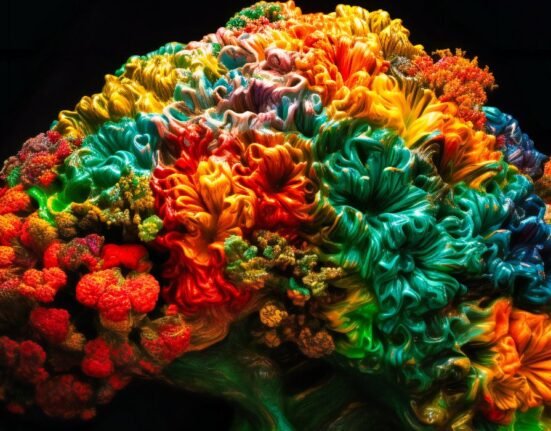The social drift hypothesis highlights the link between mental illness and social class. This means that individuals with mental health issues or disabilities often face financial challenges due to various factors. These include difficulties in finding employment, workplace discrimination due to poor mental health, costs of treatment, and meeting basic family needs.
Related: The Connection Between Poverty and Mental Health
The social causation theory suggests that people with severe psychotic disorders are more likely to live in socioeconomically deprived conditions. In contrast, the social drift hypothesis proposes that the clinical demands of such severe mental health disorders lead to a decline in socioeconomic status.
On the contrary, there is another hypothesis known as the Residue hypothesis. This hypothesis suggests that mentally healthy individuals from lower socioeconomic backgrounds outperform and move upward in social class, leaving behind the remaining mentally ill population. Logically, neither of the two theories is entirely valid but both sorts of cases can be witnessed in the society.
Patients with addiction or substance abuse disorders are suitable examples to support the social drift hypothesis. This is because such disorders often lead to a decline in socioeconomic status and negatively impact career and other life aspects. There have been interventions that talk about the social causes of mental illness as well as the economic deprivation that has been the consequence of mental illness.
The WHO Mental Health and Development Report, released in 2010, emphasized the significance of mental health as a developmental issue. It highlighted that in countries with insufficient wage or salary systems, a significant percentage of people with severe mental health issues require attention through development assistance.
Examination of longitudinal studies tracking individuals’ socioeconomic status and mental health over time.
A downgrade socioeconomic status is often known to be the causal factor of a lot of trouble in life leading to more mental health problems in an individual’s life. Daily life stressors such as education, career, family demands, elderly care needs, health-related challenges, and treatment expenses all contribute equally to potential frustrations. This has led to the general theory that stress responses stem from an imbalance between demand and resources. These ongoing hassles can lead to chronic stress that accumulates over time.
Related: Psychological Aspect of COVID 19 Outbreak
COVID-19 has been one such contributor to several mental health issues in a downgraded economic household. Considering that people were dying due to hunger because of lack of work and resources. The loss of loved ones became another factor contributing to poor mental health. Many kids lost their entire families to COVID-19, and people were unemployed for a long time, facing difficulty in fulfilling the basic requirements of their families.
Critiques and Alternative Explanations of the Social Drift Hypothesis in Relation to Socioeconomic Status and Mental Health
Mental illness is more prevalent in lower socioeconomic statuses due to the heightened stress experienced there. Factors such as lack of shelter, malnutrition, unemployment, and vulnerability to immune disorders contribute to poor physical health. These conditions can elevate psychological stress levels, increasing the risk of developing mental illness.
On the other hand, in social causation, the downward shift is also referred to as social selection. This theory states that there must be a genetic cause for the prevailing mental illness. This genetic predisposition leads to a downgrade in socioeconomic status or an inability to step out of a lower socioeconomic status. This downward theory corresponds with the cases of individuals specifically diagnosed with schizophrenia.
Related: Covid-19 Linked to New Schizophrenia Spectrum: Study
There has been a debate against the downward drift model. In the book ‘Social Causes of Psychological distress’, written by Mirowsky and Ross, it’s stated that stress originates from a lack of control, over one’s life. People with lower socioeconomic status have the least control over the events taking place in their lives. This lack of control is not just restricted to jobs with inadequate income but the feeling of being put in the minority also contributes evenly to it.
Related: The Psychology Behind Inflation
Practical Implications of the Social Drift Hypothesis for Public Health Policies
Public health policies and interventions can consider the practical implications as follows.
- Targeted support: Public health programs must provide targeted support to people going through mental illness and drift. It can provide access to mental health services, assistance and social support networks.
- Holistic approach: Public health policies must have a holistic approach that meets the requirements of both mental health and social determinants of health. It can be done by managing collaboration between mental health coaches and counsellors, social services and community organizations.
- Employment opportunities: Building more employment opportunities and encouraging workplace inclusivity will help prevent social drift. Public health policies can foster an environment where employers adopt mental health-friendly practices. These practices include flexible work arrangements, raising awareness about mental health issues, teaching work-life balance, and promoting healthy boundaries.
- Housing stability: Available housing options may create a difference in preventing social drift. Public health policies should address issues such as homelessness provide housing subsidies and encourage housing stability for people facing mental health problems.
- Social integration: Public health policies encourage community engagement, support programs and awareness campaigns to inculcate inclusivity, empathy, acceptance and positivity.
- Early interventions: Identifying the initial signs and symptoms of mental discomfort and providing timely interventions will help prevent social drift.
Related: Psychology of Money
Continued research and advocacy efforts are a necessity in meeting socio-economic disparities in mental health outcomes. Need for increased funding to carry out researches on the relation between socio-economic factors and mental health outcomes to help generate strategies based on evidence to minimize disparities.
Reference +
- Lund, C., De Silva, M., Plagerson, S., Cooper, S., Chisholm, D., Das, J., Knapp, M., & Patel, V. (2012). Poverty and mental disorders: breaking the cycle in low-income and middle-income countries. In PRIME Policy Brief. https://assets.publishing.service.gov.uk/media/57a08a67e5274a31e00005ac/PRIMEPolicyBrief1_Mental_health_and_Poverty.pdf
- Kim, Y., & Cho, S. (2020). Socioeconomic status, work‐life conflict, and mental health. American Journal of Industrial Medicine, 63(8), 703–712. https://doi.org/10.1002/ajim.23118
- Wellcomeopenresearch.org. (n.d.). https://wellcomeopenresearch.org/articles/6-139
- Wikimedia Foundation. (2023, December 3). Socioeconomic status and mental health. Wikipedia. https://en.m.wikipedia.org/wiki/Socioeconomic_status_and_mental_health#:~:text=The%20higher%20rates%20of%20mental,the%20onset%20of%20mental%20illness
- Schizophrenia and subsequent neighbourhood deprivation: Revisiting the Social Drift Hypothesis. Department of Psychiatry. (2016, May 25). https://www.psych.ox.ac.uk/news/schizophrenia-and-subsequent-neighborhood-deprivation-revisiting-the-social-drift-hypothesis













Leave feedback about this